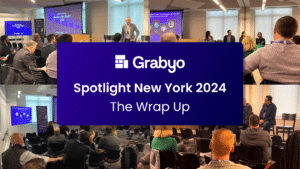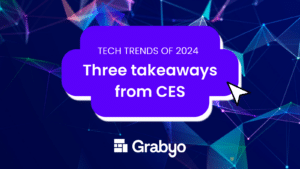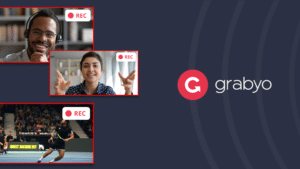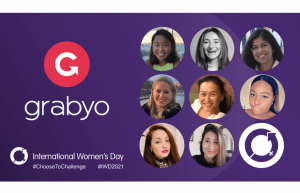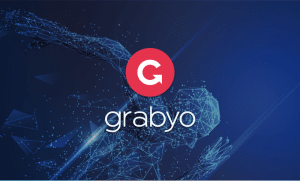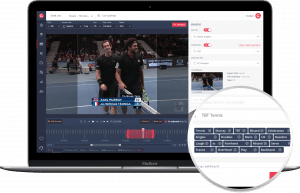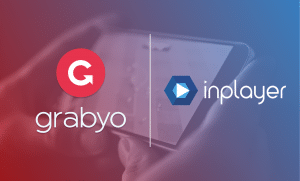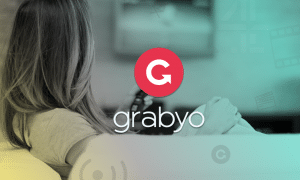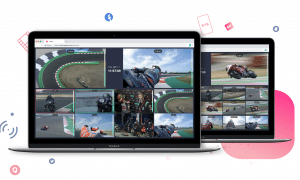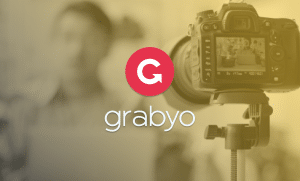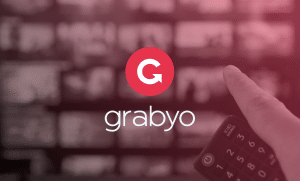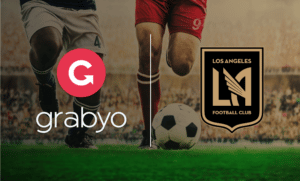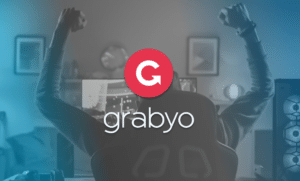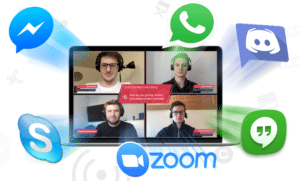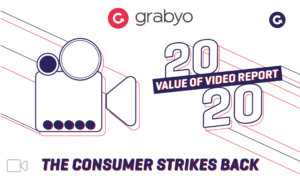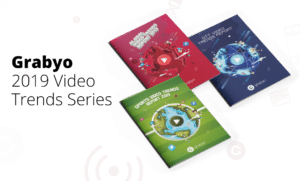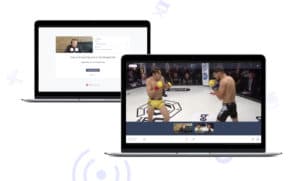Key takeaways from the end of year Grabyo partner event
Grabyo was delighted to host a number of partners for an end of year knowledge sharing evening in London this month. The event featured a series of group discussions and feedback sessions on the state of the digital and social video market in 2017. It was also a chance to reflect on experiences using the Grabyo platform and to help us shape our roadmap as we move into 2018 and beyond. The event was attended by ITV, The English Football Association, PERFORM, Caribbean Premier League, CageWarriors, NIKE and a number of other partners.
Here is a consolidated look at some of the topics discussed and the key points raised.
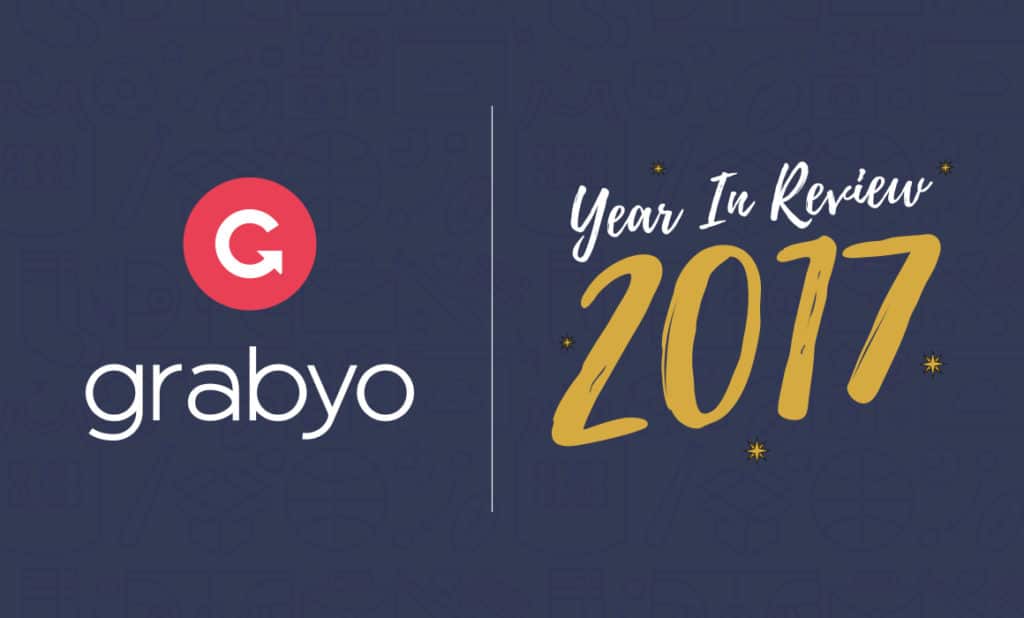
Develop your own brand identity
Video was the key focus for social publishing in 2017 and formats are evolving quickly, including: mobile optimized video for news feeds; square, vertical, video padded with text callouts; captions and subtitling all became common practice for publishers.
The continued innovation for content published on social media platforms has, understandably, led to many publishers looking to copy and imitate the next emerging trend. While this might seem like best practice – “good artists copy and great artists steal” – there was common consensus that rights holders and publishers need a consistent tone and message to ensure that the style and format of content fits their own brand. This extends to target audiences: what is the best way of communicating a story using video, how does that fit with the wider brand tone and objectives, how can you leverage sub-brands and identities to reach certain groups. Don’t just use gimmicks because one of your competitors has.
Understanding your message, brand identity and how this fits in with your overall strategy, should dictate how you approach content creation and delivery. Should a high production-value emotive piece of content be cropped and padded with large text and emoji overlays? Maybe not… but they are still useful tools for social video content production. It’s about finding a way to create content that audiences know belongs to you – so they stop on your video when they scroll through social feeds – which is harder to achieve for copycats.
Own your content, own your messaging
The virality of clips was heralded as a key benefit for social video distribution. Many content owners use third-party publishing partners and influencers to accelerate the reach and impact for specific content types and properties.
For some this is a great way to quickly increase awareness and reach of emerging properties or events but it can come at the expense of organic growth and the ownership of messaging. There is a growing debate regarding the balance of social publishing and influencer marketing versus building an organic audience on your own platforms – the reality is both are important and the greatest success was had by partners who recognized fans are everywhere, so your content needs to be too. The greatest challenge is working out what goes where and for whom.
Are big numbers always good numbers?
Much has been made about the validity and reporting of social metrics, especially for video viewing figures, watch times and audience retention that vary considerably by platform. This debate was fuelled in 2017 with the challenges faced by Facebook with regards to the accuracy of video metrics, as well as ongoing changes to analytics reporting across Twitter and YouTube. A number of partners discussed how goals are moving with regards to these metrics: getting “billions of views” on social media is not the only measure of success – and is often a ‘vanity metric’ – metrics should be tied to specific goals which should not be lost to vanity.
This comes down to understanding what you are trying to achieve and knowing exactly who your target audience is. Using insights and data to track the impact of your content at a demographic, commercial and geographic level may be a better way of understanding the performance of content – rather than high-level aggregate view numbers.
Looking at the engagement rates across content was seen as a better indication of immediate success. There were numerous examples of partners measuring success by delivering great content to a highly engaged target audience, rather than the overall audience. Performance was not about total viewing or reach, but highly engaged participation with a specific target customer group.
Sponsors want ROI
Sponsors and brand partners are looking closely at the ROI of social partnerships and looking for more integrated ways to develop branded content that better communicates messaging, brand image and commercial objectives.
Large viewing numbers have been a traditional measure of success for sponsors looking to reach new audiences. Sports and TV sponsorships have been driven by this, the largest audience reach = the biggest sponsorships. Social and digital platforms have a role in helping brands partner rightsholders and broadcasters, but brands are now starting to think like publishers and look at how to use partnerships to deliver a content experience that results in measurable success.
As we move into 2018, brands and publishers will be working more closely to create better branded content experiences, use audience reach for specific demographics and campaigns, and use technology to create new content and experiences that tell the brand story. This is the potential for social video publishing in 2018 – create scalable, yet unique propositions that access the mobile, social audience and tell a brand story which is more than just a badge on a shirt.
Mobile, social-focused publishing will thrive in 2018
Audiences consume more social and mobile video content than ever now and publishers need to deliver experiences to these platforms in the same way as they would for web or linear TV. Simply republishing content built for TV across social and digital platforms is not the answer – all the partners we spoke to highlighted the need to create video content that reflects the needs and behaviours of a demographic group for which mobile is the first-screen – sometimes the only screen.
This means: more dedicated resources for social content and programming; higher fidelity outputs for digital video content; a greater focus on graphics and production that reflect viewing on a mobile screen. This comes as the major social and digital platforms have increased support for high-quality streaming and have focused attention on video content discovery. An example of this was outlined by Facebook this week with updates for video publishing and monetization on the Facebook platform:
Video distribution: Updating News Feed ranking to improve distribution of videos that people actively want to watch — for example, videos from Pages that have strong repeat viewership.
Ad Breaks: Improving the viewing experience for people by updating our guidelines for Ad Breaks, and providing new metrics for publishers and creators to understand how their Ad Breaks perform.
Pre-roll: Testing pre-roll ads in places where people intentionally go to watch videos, like Facebook Watch.
As our partners continue to innovate across social and digital 2018, Grabyo will continue to support and build the capabilities to meet the changing demands for digital and social video consumption. Get in touch if you would like to know more…we always love your feedback.
Related blogs
Stay in touch.
Join over 10,000 media professionals and register to receive our monthly newsletter directly to your inbox!
